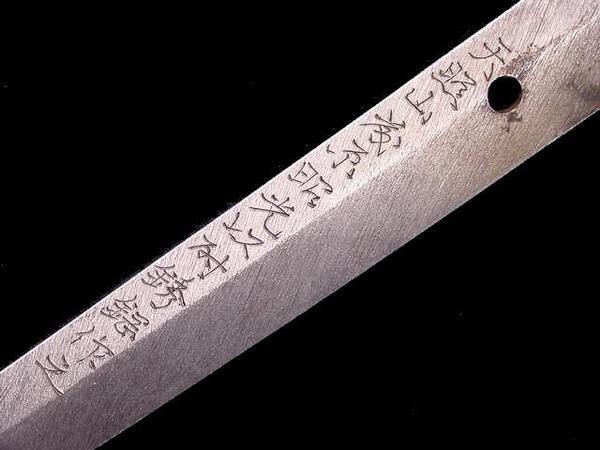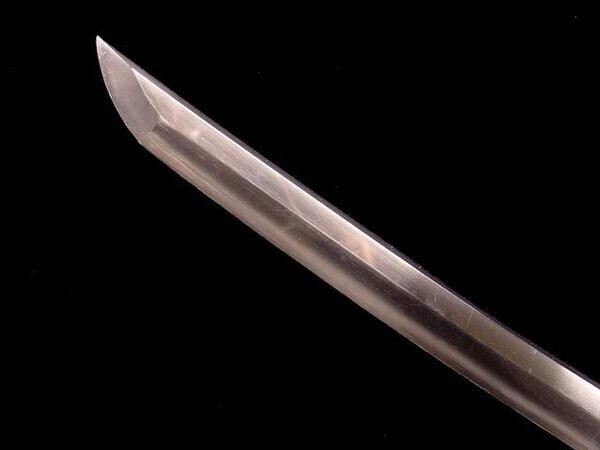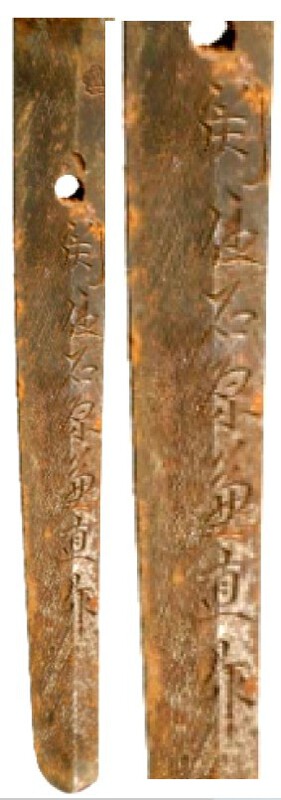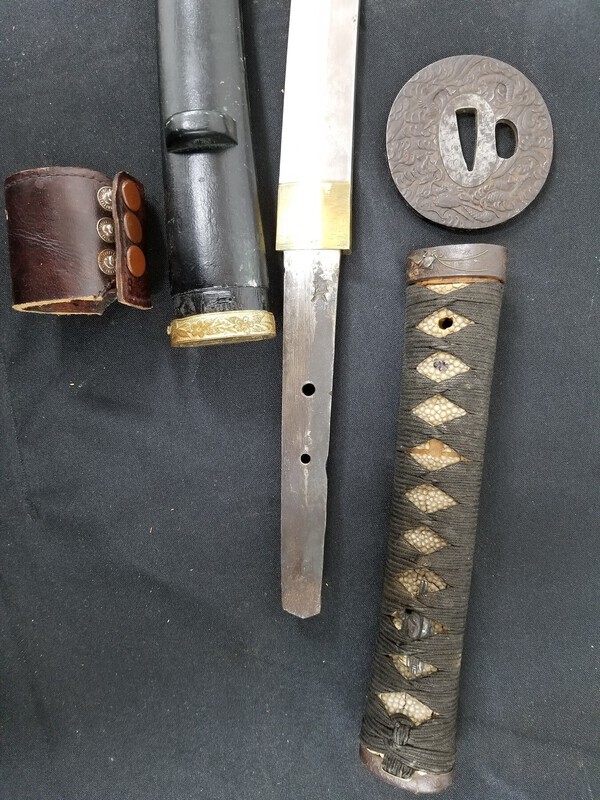-
Posts
13,143 -
Joined
-
Last visited
-
Days Won
157
Content Type
Profiles
Forums
Events
Store
Downloads
Gallery
Everything posted by Bruce Pennington
-

Tenzoshan Tarenjo ... but more?
Bruce Pennington replied to Bruce Pennington's topic in Translation Assistance
In the middle of moving right now, so I’ll have a go at it when everything settles. I got started on the Toyokawa arsenal stamps already. -

Tenzoshan Tarenjo ... but more?
Bruce Pennington replied to Bruce Pennington's topic in Translation Assistance
Are you going to make me beg? I will,, you know! -
-
I second Thomas' request!
-

Tenzoshan Tarenjo ... but more?
Bruce Pennington replied to Bruce Pennington's topic in Translation Assistance
Fabulous! Thanks Moriyamasan! I'm tabulating Toyokawa and Tenzoshan blades and this is the first one I've come across from Tenzoshan with a smith's mei, and so far, the only dated one. -
The website discussing the Tenzoshan factory posted this blade as an example, and said the mei read "Tenzoshan Tarenjo" but it seems to me that it says more than that. Could I get the rest of the mei, please? I can see it's date is 1939. Thanks!
-
Fair enough Mal. I get excited sometimes and run my mouth before I dig into the facts! I'll start tracking the Navy stamps and see what develops. I think it's going to be a tougher study, though, as there are less Navy blades to tabulate and my rough impression of them is that more so than Army, they aren't dated very often.
-
I was also interested to read, in Mal's Seki/Navy article, that the Navy stamping doesn't seem to be present on their blades until 1942. I'll have to add that to my Stamps Survey. It brings up the question of "why not?" Did the Navy just thumb their noses at the law which required stamps on non-traditionally made blades, which started around 1938 (or sooner)? Does this indicate that the "law" wasn't a law at all, but an Army Regulation? I wish we had documentation about the stamping "law." This observation by Mal, that the Navy blade stamping began in 1942 coincides with the Army's assumption of control over ALL sword production at that same time.
-
This is way out of my cup-'O-tea, but I appreciate seeing the writing on the nakago mune. If they were doing it way back then, it sort of normalizes the stuff I find on WWII military nakago mune. Now back to the regular programming!
- 1 reply
-
- 4
-

-

-

A little introduction and my first kyu gunto!
Bruce Pennington replied to PxN13's topic in General Nihonto Related Discussion
Hoping to hear Hamish's opinion on this, he's quite expert on them. It's quite gorgeous! I have to say I've never seen one with a locking latch. I was trying to find a Warrelics discussion of police sabers (I know this isn't police), and how their locking buttons (chuso) were switched to this kind of latch because rain was getting into the saya with the chuso style. The shop that was making those could have been the same shop that made this. Or it's simply custom and the owner wanted a latch. Do you know the meaning of the names on the backstrap? -
It looks to me like a 4 and a bad 8
-
Thanks Steve! After zooming in, I think the top is just bad steel-work. I've enlarged and you can see some strokes better.
-

Emergency Late War Officer Gunto
Bruce Pennington replied to Bruce Pennington's topic in Military Swords of Japan
This is an interesting subject by itself. I'm seeing a variety of ways to mention the type of steel used in a blade by various smiths. Some are written out on the nakago. Some use stamps. This one is actually on the blade. I'm not aware of an edict requiring such mention (or else they all would do it), so there must be some sort of pride in the local steel used, like a marketing statement. "Buy my sword, it's made of Yasugi Steel!" That sort of thing. -

Peter Bleed can see into the future
Bruce Pennington replied to lonely panet's topic in General Nihonto Related Discussion
The one page you provided is sort of on the mark, as collections are probably smaller today than they were 25 years ago. The collections of 80 to 100 or more swords are likely not part of modern collection due to climbing prices. -

Emergency Late War Officer Gunto
Bruce Pennington replied to Bruce Pennington's topic in Military Swords of Japan
Can you tell us what it says? -
Once again, I'm reminded of the axiom "When it comes to gunto, never say 'never' and never say 'always'"! Reading Mal Cox' excellent article on "Seki Swordsmiths and Japanese Naval Swords", I came across this Kaigunto - Navy - gunto - with a Showa-stamped Kanenao blade. All sources up to now have always (ooh, there's that word!) said that Showa stamps are "ONLY" found on Army blades. And I've repeated that in the Stamps Doc. Well, I guess that is going to be changed to "predominantly" found on Army blades! The change will be in 7.4 when it comes out.
-
Wanted to link these two threads. Similar, but different, and lots of different examples on both threads: Navy Rinji Model
-
Just wanted to add a link to a similar thread: Last Ditch Naval Rinji?
-
Wartime polish. Looks Japanese to me. Reminds me of my late-war Type 95 in workmanship. An honest effort, but likely rushed. I wish I knew blade terms, but that line that runs down the side, isn't precise. My 95 blade is that way. I dropped the kanji on the nakago on the Translation Help Forum, to see if it's identifiable. There was a heroic, and honestly hard to comprehend, push in '44 and '45 to drastically increase sword production. Here's a chart on just Type 95 production. We know that Allied bombing had taken a huge toll on mainland sword production and so the industry was pushed into occupied China and other places. So imagine these "offshore" shops who weren't prepared anything like the mainland shops for such a demand, being asked to produce MORE blades than the mainland shops had ever produced! On top of that, the Army loosened quality control standards in an effort meet the demand. This blade and gunto rig doesn't surprise me in the least.
-
What is the "March 1976" about? The date of the certification?
-
Any chance this is a Buddhist bonji or other symbol to the gods? It's on a late-war blade re-fitted for the war. Might be occupied China made. In the last year of the war, they were increasingly putting religious items on nakago, so giving this a shot before we yell "Chinese fake!"
-
The saya fits the late-war navy pattern, late-war in general as here is a late-war army gunto with the same setup HERE. The tsuka looks old, can't speak to the tsuba, but civil. I want to say it's a civil sword re-fitted with late-war navy military, but that nakago is crude. The Chinese have a habit of marking the nakago with a single kanji and stamping numbers on the habaki. While this could be fakery, I'm still leaning toward a late-war navy re-fit, possibly with a blade made in occupied lands. Can you give us a full-length, naked blade and close-ups of blade tip and a shot of the hamon?













